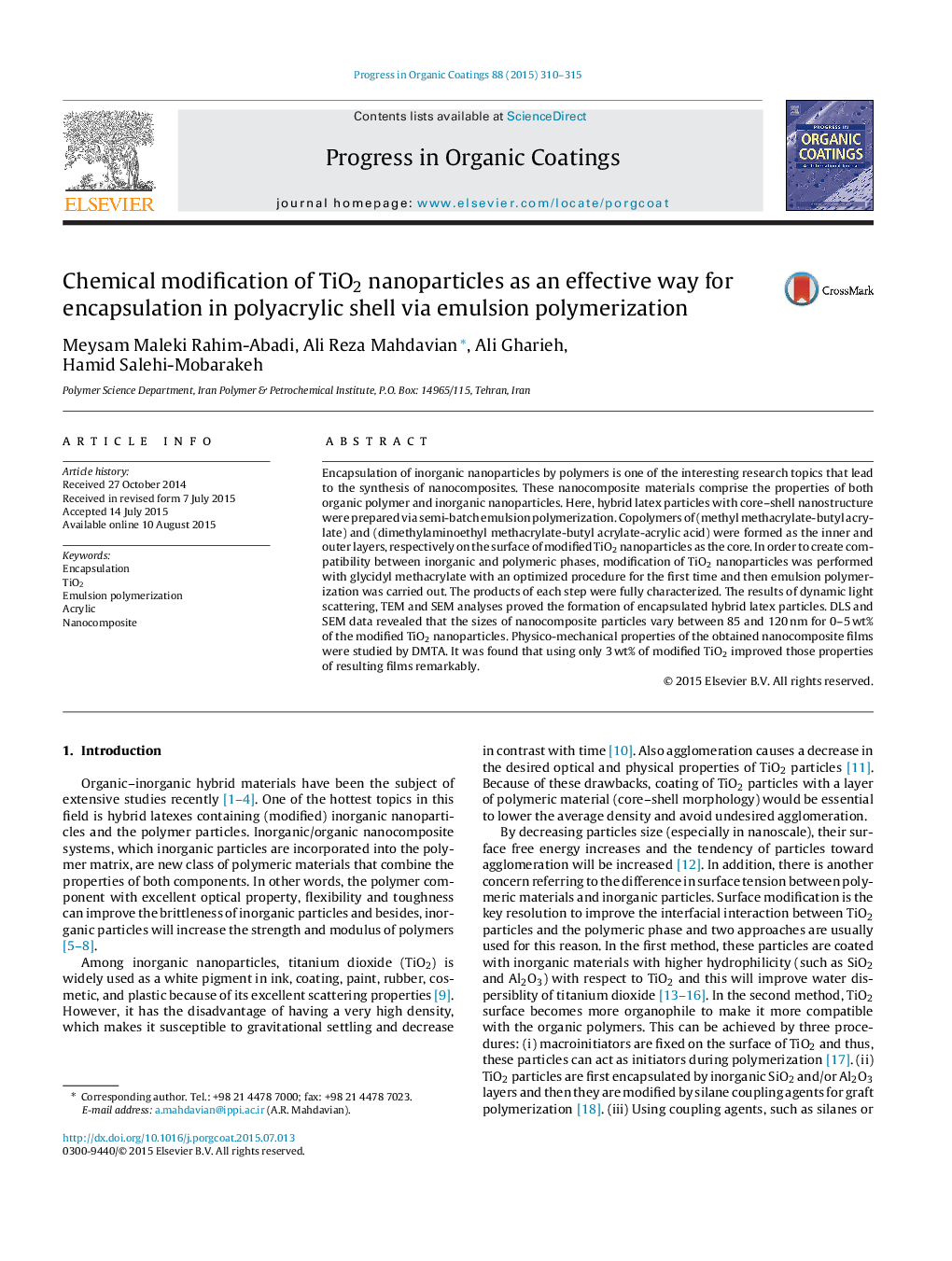| Article ID | Journal | Published Year | Pages | File Type |
|---|---|---|---|---|
| 692334 | Progress in Organic Coatings | 2015 | 6 Pages |
•Chemical modification of TiO2 nanoparticles with unsaturated groups.•Encapsulation of TiO2 nanoparticles.•Core–shell nanocomposite particles based on TiO2/acrylic copolymer.•Characterization of TiO2/acrylic nanocomposite films.
Encapsulation of inorganic nanoparticles by polymers is one of the interesting research topics that lead to the synthesis of nanocomposites. These nanocomposite materials comprise the properties of both organic polymer and inorganic nanoparticles. Here, hybrid latex particles with core–shell nanostructure were prepared via semi-batch emulsion polymerization. Copolymers of (methyl methacrylate-butyl acrylate) and (dimethylaminoethyl methacrylate-butyl acrylate-acrylic acid) were formed as the inner and outer layers, respectively on the surface of modified TiO2 nanoparticles as the core. In order to create compatibility between inorganic and polymeric phases, modification of TiO2 nanoparticles was performed with glycidyl methacrylate with an optimized procedure for the first time and then emulsion polymerization was carried out. The products of each step were fully characterized. The results of dynamic light scattering, TEM and SEM analyses proved the formation of encapsulated hybrid latex particles. DLS and SEM data revealed that the sizes of nanocomposite particles vary between 85 and 120 nm for 0–5 wt% of the modified TiO2 nanoparticles. Physico-mechanical properties of the obtained nanocomposite films were studied by DMTA. It was found that using only 3 wt% of modified TiO2 improved those properties of resulting films remarkably.
Graphical abstractFigure optionsDownload full-size imageDownload as PowerPoint slide
